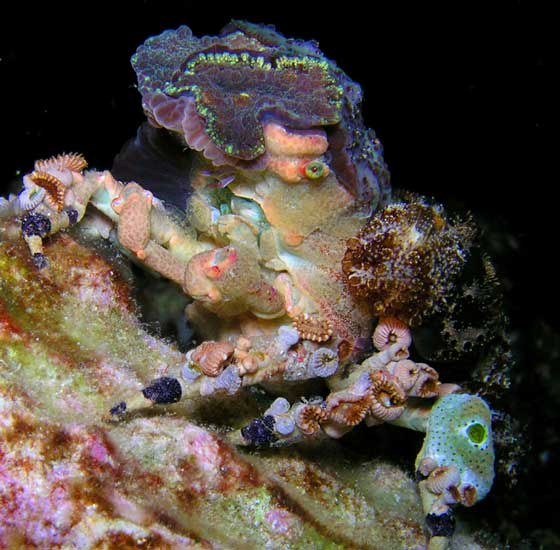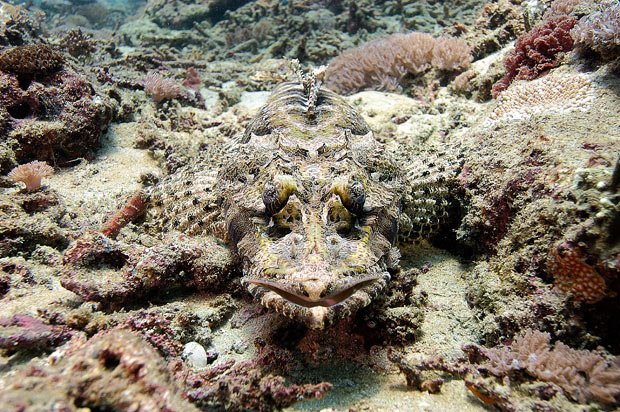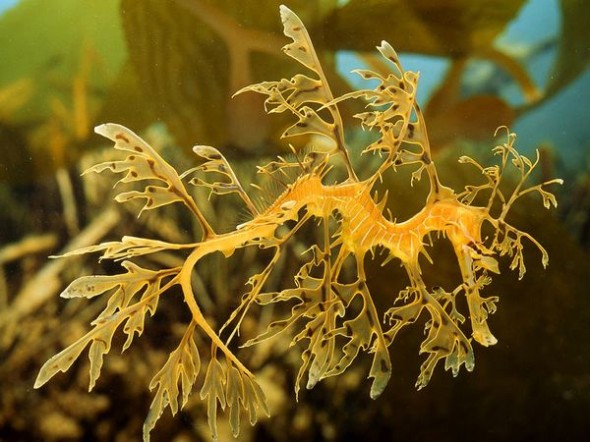The epistemic import of camouflage vis-a-vis notions of realism is an under researched area of inquiry.
Camouflaged critters bring to mind not just the intersubjective character of perception but also its interspecies reality.
Different organisms hide not just from us humans but also from a wide variety of other species, playing on appearances.
This means that we humans encounter phenomena in terms of specific perceptual capacities, but not in a way entirely alien to other species.

The point is not to efface differences across species but to explore multispecies entanglements in perception.
Because the aesthetic play of appearances can be life or death in multispecies epistemes. 

Reblogged this on synthetic_zero.
LikeLike
Love the photos!
LikeLike
“The epistemic import of camouflage vis-a-vis notions of realism is an under researched area of inquiry.”
I entirely agree, though I’m pessimistic about the prospects of approaching the issue phenomenologically. Ecologically speaking, I think camouflage is an excellent example of the heuristic nature of perceptual cognition, how evolving structures that ‘game’ the problem-solving capacities of another species leads to reproductive success (my favourite example is the cuckoo). Exo-environmental sensitivities are always strategic because they’re always bounded. All these examples wonderfully illustrate the way vision, for all its gorgeous experiential bandwidth, remains a limited channel.
But the same, however, goes for our endo-environmental sensitivities – and this is where I think the moral of these photographs truly lies. Contrast *pareidolia* to camouflage, the tendency to see faces in water stains, for instance, or photographs of the Martian surface. Just as a heuristic, ecological account can explain the detection of false negatives, it can also explain the detection of false positives. As ecological, heuristic cognition and metacognition will breakdown whenever they encounter information they are not adapted to solve. Considering this issue in terms of ‘intersubjectivity,’ I fear, will simply lead to more philosophy, because it will amount to an account of camouflage tyrannized by pareidolia.
LikeLike
Thanks for the comments, Scott. I agree with what you’re saying here in regards to couching the discussion in terms of intersubjectivity. I didn’t really spell it out fully above, but what I’m trying to get at is this way in which what phenomenologists sometimes call intersubjectivity is undermined from within by all these non-phenomenal sources that curiously migrate crab-wise across species (no doubt because we share some kind of evolutionary heritage with those species, on the one hand, and because whatever sensory systems we do have developed in close proximity to those species, on the other). I don’t want to limit this to some kind of phenomenological exercise—I’m trying to get at something more multimodal—but at the same time I do think scientific understandings of ecological / evolutionary scale phenomena are precisely what need to be interfaced with first-person awareness, since I don’t think this sense of the first-person is going away anytime soon (pace transhumanism), and since even our technologically enhanced and mediated readings of the physical universe are still coupled to the level of first-person judgements and actions (though I’ll admit that machine learning muddles this a bit). One way to think of camouflage without the “tyranny of pareidolia,” then, would be to consider, as I gesture towards above, that this level of appearances—including of phantasms and imagined faces—is in some sense ingredient in our biology from the get go. It’s a fact of our experience. To ignore that fact could result in a different kind of tyranny that evacuates appearances all together, which, as I’ve said elsewhere, makes the evolutionary process incomprehensible.
LikeLike
“I do think scientific understandings of ecological / evolutionary scale phenomena are precisely what need to be interfaced with first-person awareness, since I don’t think this sense of the first-person is going away anytime soon (pace transhumanism), and since even our technologically enhanced and mediated readings of the physical universe are still coupled to the level of first-person judgements and actions”
Very well put. This is the project, isn’t it? (Well, it’s the way I see the project, anyway). Ecology is the way to see through the nature/meaning impasse: the question is simply one of how drastic the renovation will be.
Remember though that appearance/reality is itself heuristic (ecological), mediating an organism’s high D environmental entanglements as a cherry-picked set of low D yes/no relationships. What’s ‘biologically ingredient’ is the fact of neglect, the fact that cognition is ecologically bounded, and so always prone to various kinds of subreption. The limits of one species is a potential niche for another species to exploit.
LikeLike
It’s always helpful to remember that the appearance / reality distinction is itself a variable conceptualization, prone to all manner of mutations and renditions, and not something to be reified. Thanks for underscoring that important point.
LikeLike
http://www.newappsblog.com/2015/05/lewontins-revisition-of-the-spandrels-paper-with-ds-wilson.html
LikeLike